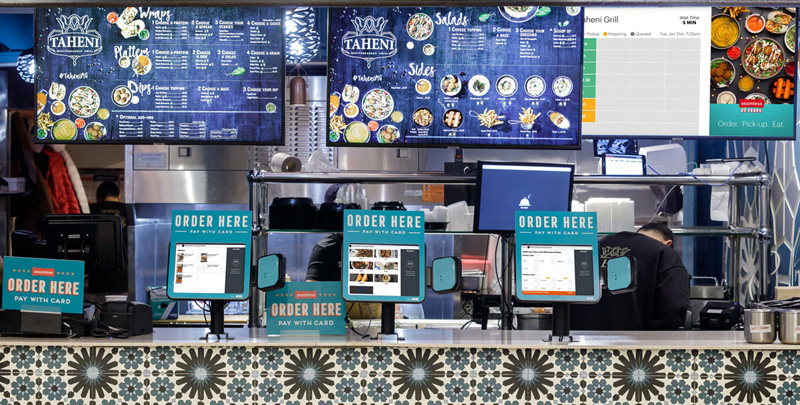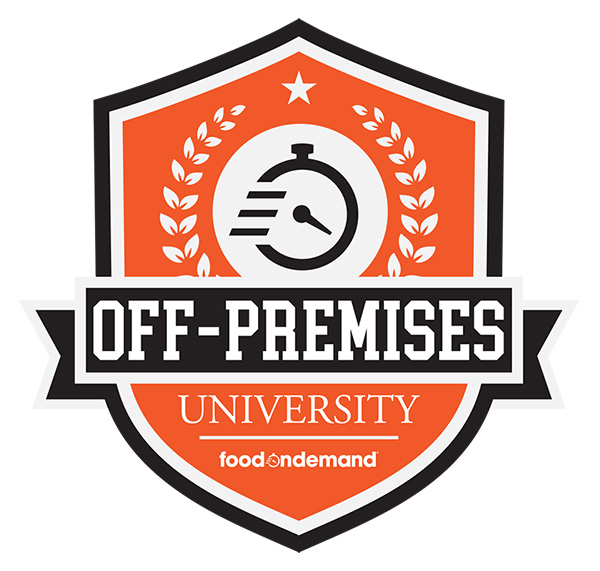Grubhub is making a move into hardware, and it’s well beyond another tablet. The company unveiled a new point of sale (POS) system dubbed Ultimate in an attempt to help restaurants become more sophisticated around takeout. It will also help ease some headaches with the delivery handoff.
Essentially, the system is made up of four components: a lightweight, cloud-based POS that is pre-integrated with Grubhub and mobile apps; a kitchen display system to send orders to the back of house; and countertop kiosks for self-ordering within the restaurant. The fourth component, a public screen for customers and drivers to track orders, goes beyond those traditional POS tools.
Visitors to a few brands have probably seen screens like this. McDonald’s employs them in many airport locations and other high-volume restaurants broadcast orders to those waiting in line. It’s a nice way to see where you’re at in the queue and could mean a little better order flow. The queue is also mirrored in the Grubhub app, so even remote customers can see where their lunch is in the process. And like those large facilities, there is opportunity in stadiums and event venues to help fans order at their seat and avoid the inning-long wait and miss the action.
Of course, this makes life better for delivery drivers as well. Instead of just wondering if the restaurant pushed the order in favor of traditional diners (a common complaint among drivers) they can see where in the process their order is, too.
The technology was initially tested on the Ohio State University campus as a way for students to order, and track their meals so they could efficiently pick them up between class. It was quickly adopted by busy students (or bored students in the back of the room).
“Students enjoy the convenience of self-ordering opportunities, and we’ve seen demand for our foodservice operations increase since installation across our campus. It increased the efficiency of our operation while providing a service that is highly desired by our students,” said Zia Ahmed, senior director, dining services at Ohio State University.
The second phase of the test was 100 restaurants in New York and Grubhub’s home market of Chicago. David Morton, co-owner of DMK Restaurant Group, said it’s actually changed how they think about restaurant flow.
“Ultimate is exactly what I was looking for but didn’t know it,” said Morton. “We have designed our new restaurants around this technology because it allows us to provide better service to our customers with less effort and cost. This is a game changer in quick-serve and fast casual restaurants.”
How it all rolls out is up in the air, switching a POS is not a project taken lightly and sits at the core of the restaurant operations, so expect slow adoption. And what it takes for operators to execute around menu timing, tweaking for their restaurant and integrating with everything else a modern restaurant needs will be an ongoing process. It’s a big development for Grubhub, and the platforms themselves. They’re doing so much more of this in-restaurant work now and really evolving beyond gig-economy pure plays and software.




